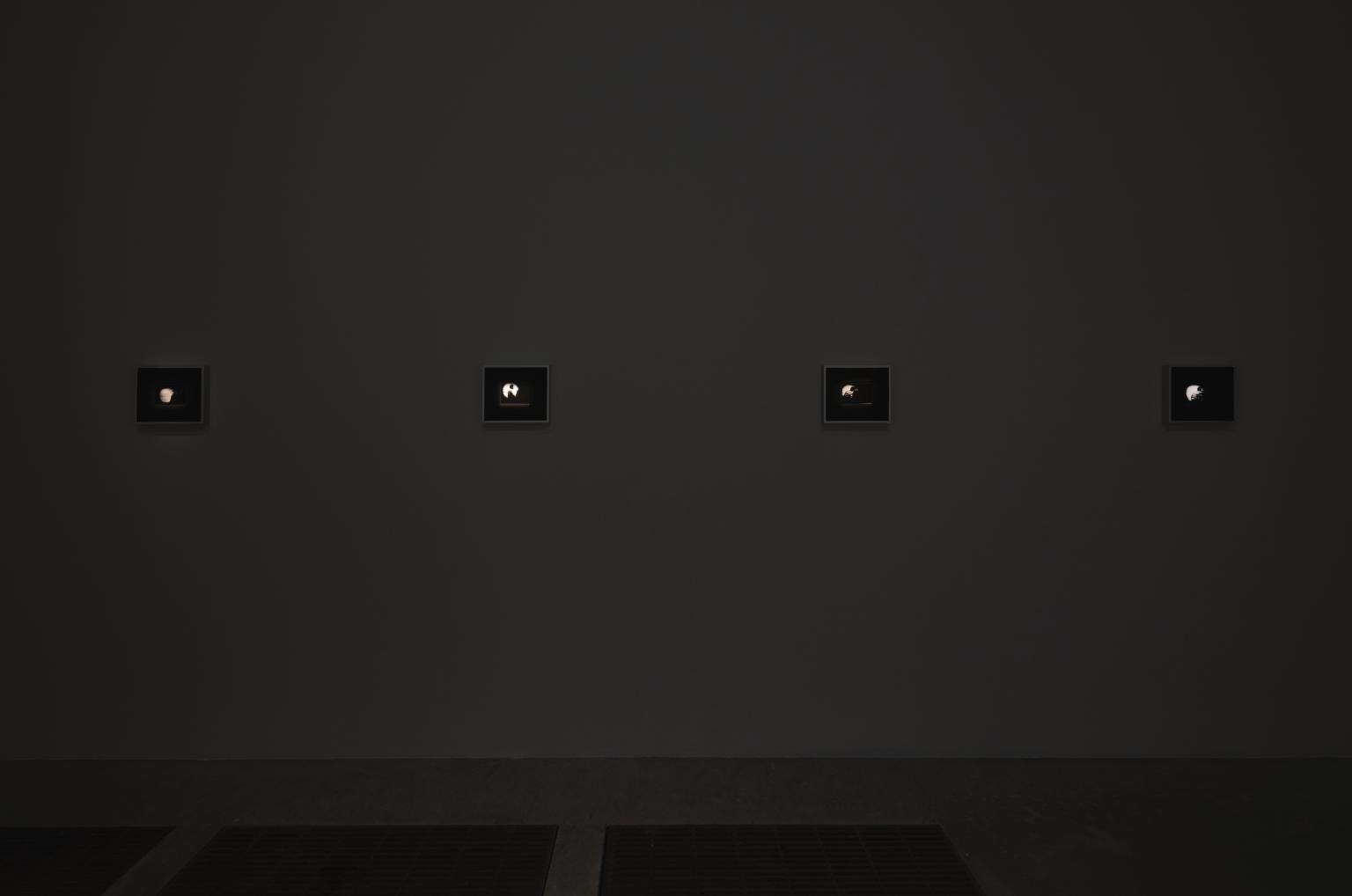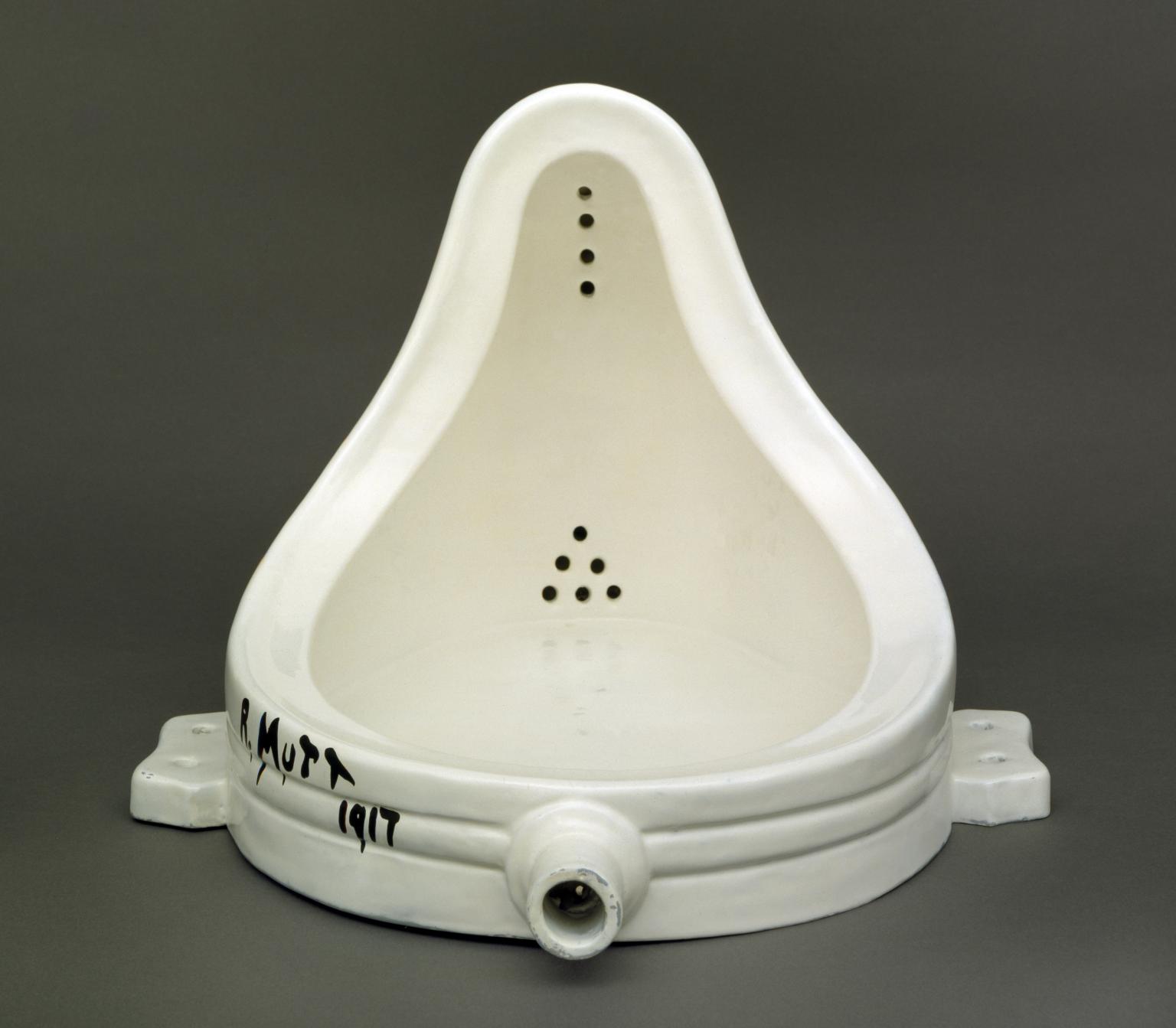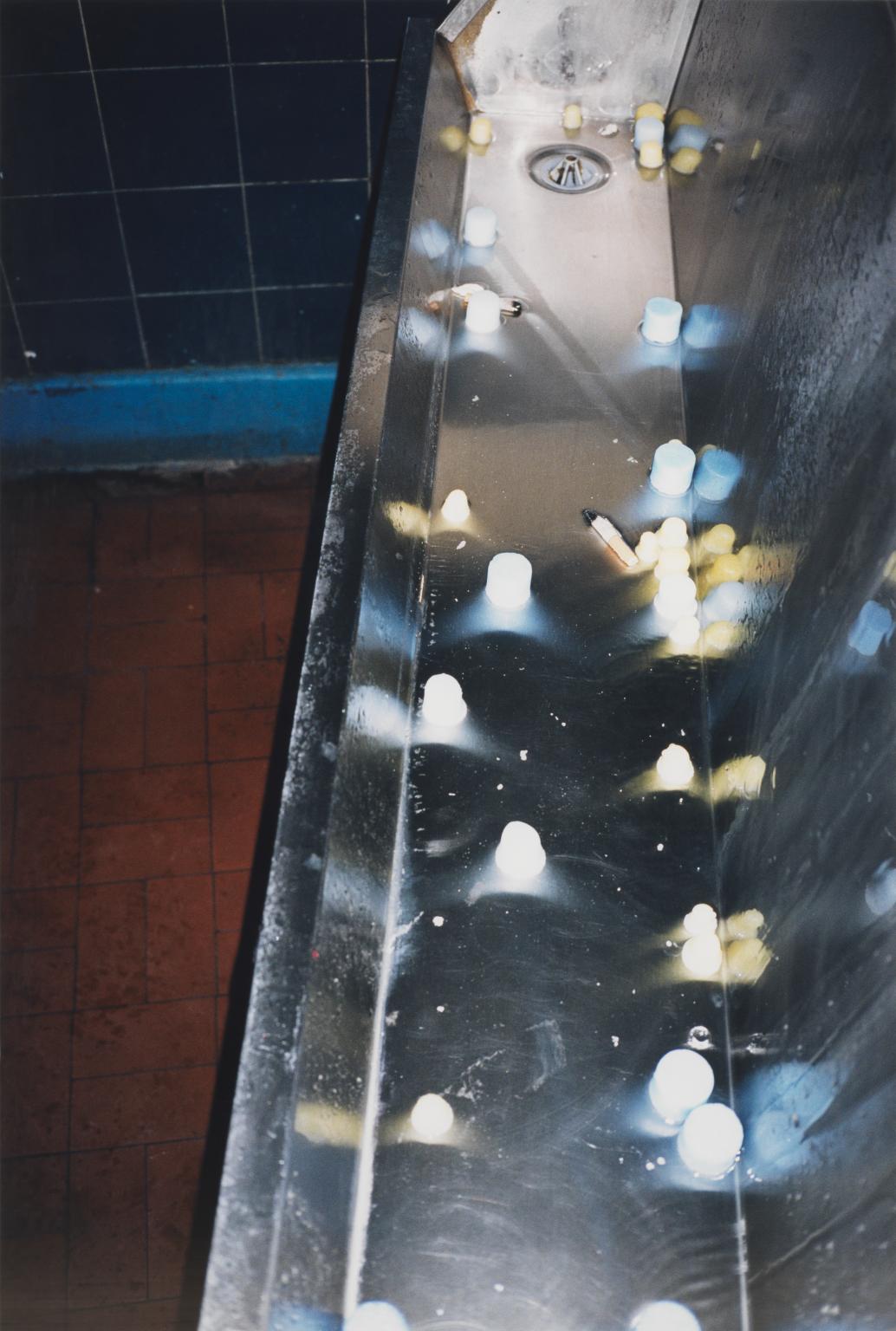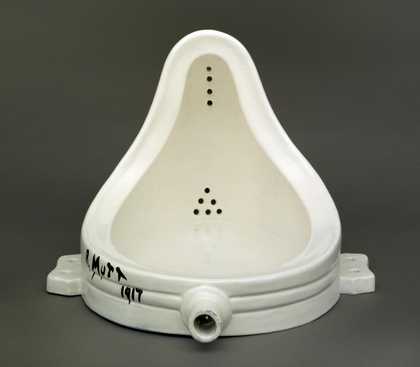9 rooms in Materials and Objects
How does the body relate to the material structures of the everyday world?
'From my urinal, I spy...'
Marcel Duchamp
Public toilets are architectural structures made for private bodily functions. They are also used as cruising sites for sex. This display focuses on three artists who use the space of the public toilet to reimagine the work of art and questions of visibility.
In 1917, Marcel Duchamp purchased a urinal and submitted it for inclusion in an exhibition. The work introduced the idea that mass-produced everyday objects can be presented as art.
However, DuchampŌĆÖs use of an object associated with bodily waste was considered indecent by the exhibitionŌĆÖs organisers. The artworkŌĆÖs title, Fountain, connects a fountainŌĆÖs spurt of water with urination.
Miguel A╠üngel RojasŌĆÖs photographs On Porcelain reference the material of floor tiles in toilets but do not depict them. Instead, they focus on a sexual encounter between two men inside the public bathroom of the Faenza theatre in Bogota╠ü, Colombia. The apparent anonymity of the figures draws attention to the illicit nature of cruising spots such as toilets. These were important sites at a time when sex between men was illegal.
Wolfgang TillmansŌĆÖs photograph The Bell presents a different urinal. TillmansŌĆÖs use of colour photography draws out the sheen of the stainless-steel. Such open urinals lent themselves to cruising as men could more easily make gestures to each other while standing side-by-side.
Art in this room




